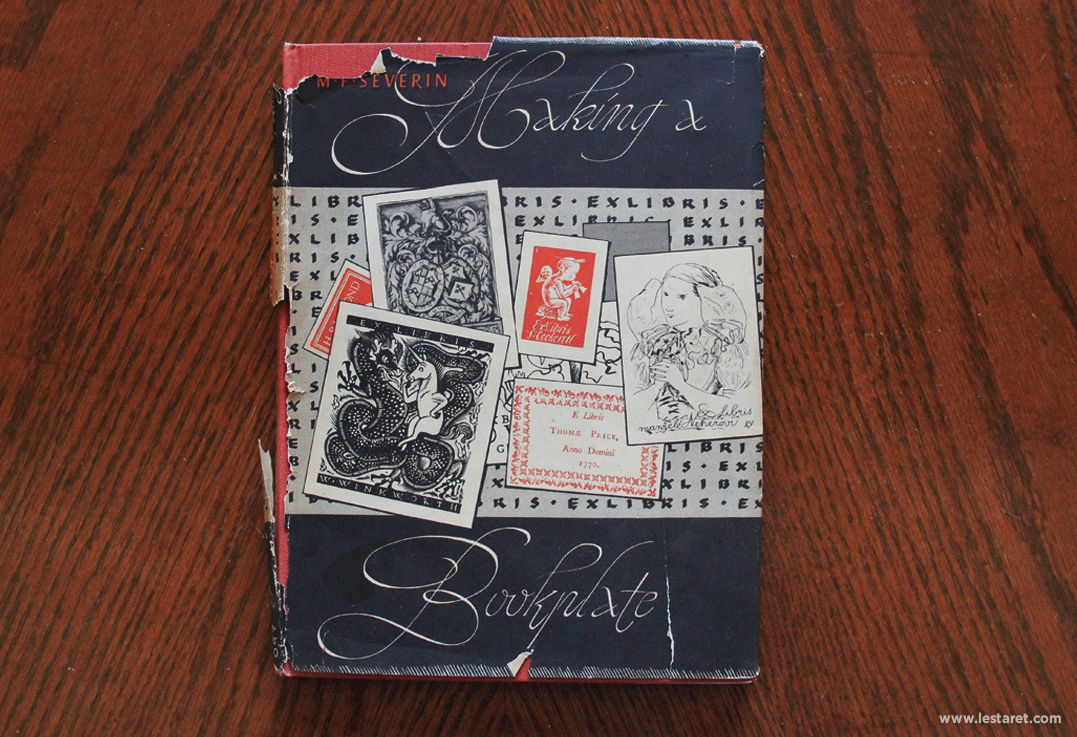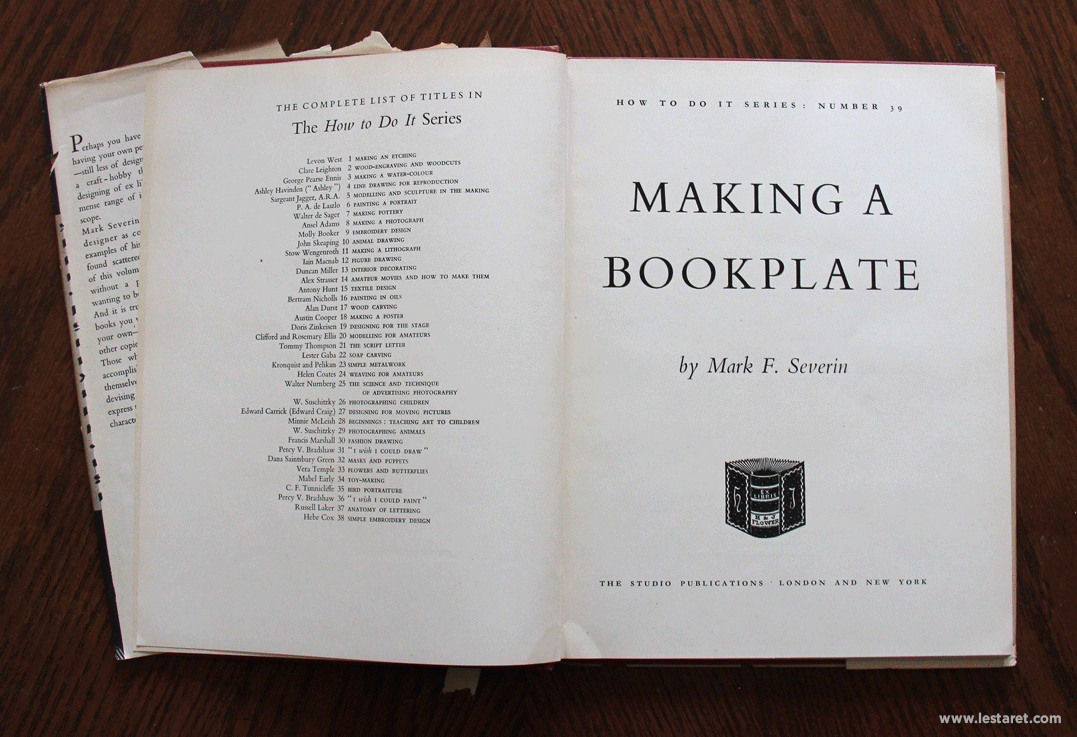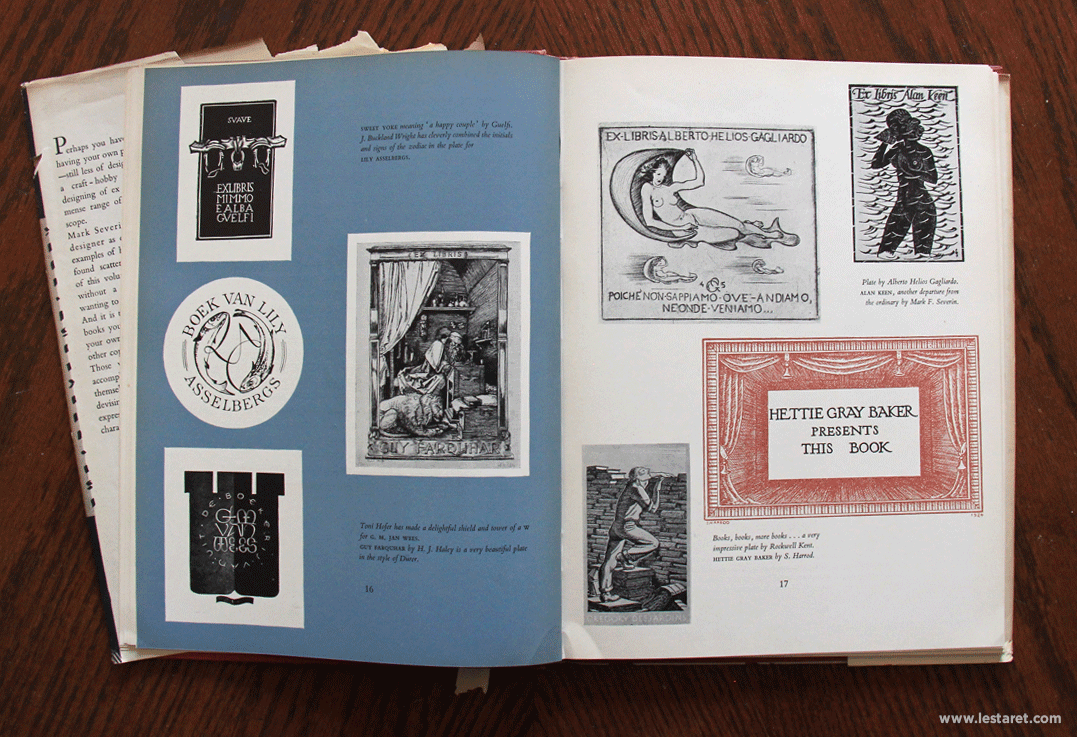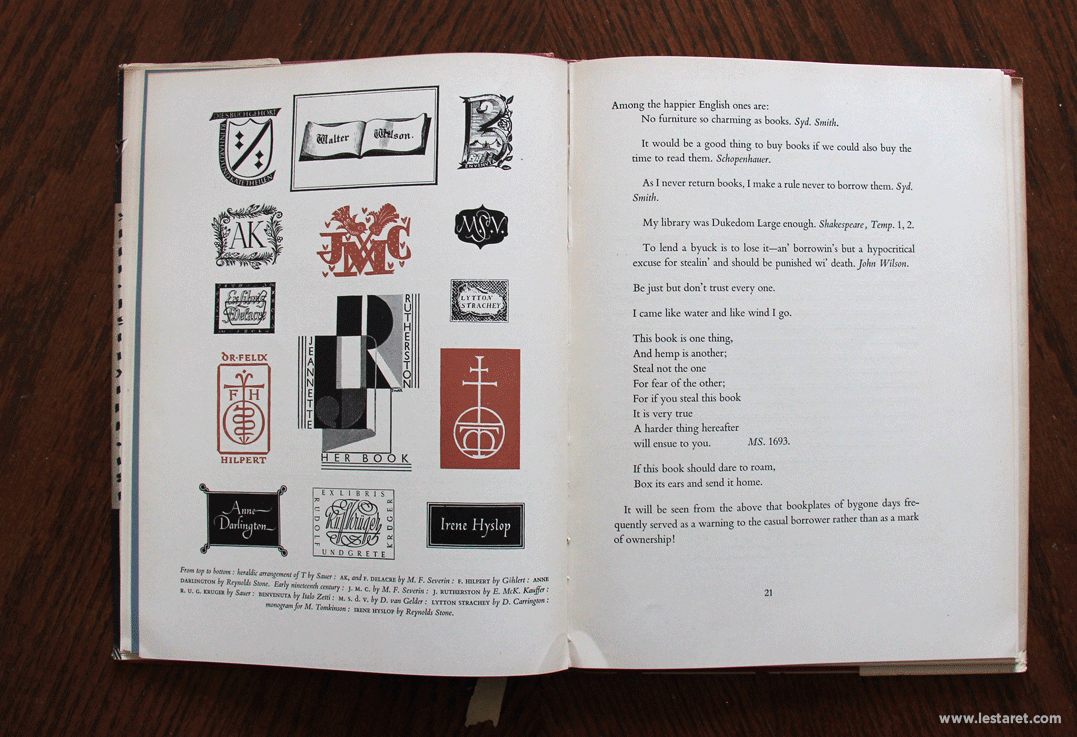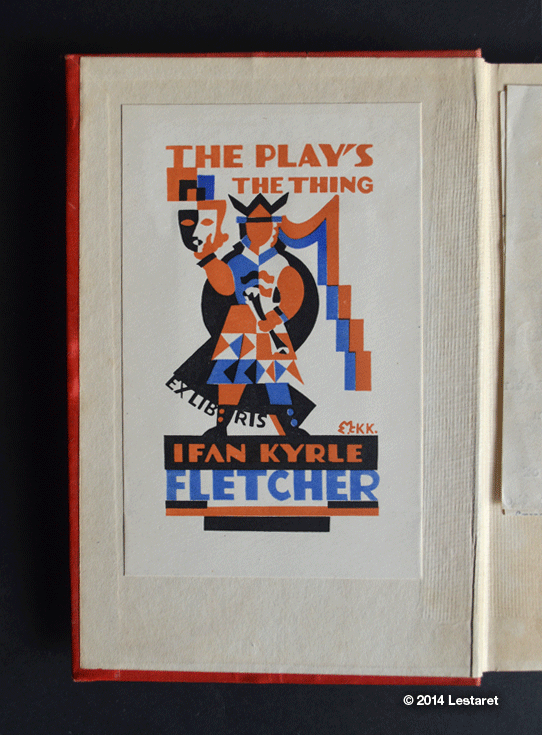I rediscovered a book in my collection that got me thinking and thought I’d share it here. I think it is an elegant example of celebrating a niche area of graphic design that has largely disappeared – bookplates. Little personalised labels that are pasted into books to identify the person, collection or library the whom the book belongs. It seems a little quaint these days, but these originated in a time when many people regarded books as precious things, and felt the need to add their distinct personal mark so that books borrowed are returned.
I love the fact that this book has its own bookplate!
Many designers, typographers and artists were commissioned to produce bookplates, including Reynolds Stone, Eric Gill, MC Escher, George Cruikshank, and even Rudyard Kipling, many of which are highly sought after by collectors.
Its a lovely book that is at odds within the world it now exists, as it looks at the history and craft of this once common but now peculiar subject of personalising book ownership. After all, we often do not really own what we buy these days, but tend to buy, rent, license, hire, subscribe, etc, and our rights to ownership end when the payments stop or the license expires. Or what we have bought is just data, an app or other digital concoction that has no actual form excepting the vehicle that it installed upon.
This is not a post claiming that “it was better in the old days” or anything like that. I’m an enthusiastic technology user and am still in awe at some of the things we consider standard today. Bring it on. What I am thinking about though is that in our digital age, as design has become increasingly intangible, what evidence will remain of our current digital design culture? This book is not just a record of an almost (but not completely) lost area of design, but an account of how bookplates were considered, collected and categorised in the first half of the 20th century.
So how will the designers of 2119 know about all the great digital work in the first part of this century? What evidence will remain of all these content rich, all-singing, all-dancing websites that are interconnected with social media apps and trend aggregators in 100 years? I’m not convinced that there will be some sort of archive of landmark websites, or an ex-app depository in 100 years. After all, if the once mighty MySpace can ‘lose’ all its content uploaded before 2016, it is not guaranteed that any other digital content will exist indefinitely. What happens when the power goes off?
I’ve never made a secret of being a book guy and don’t particularly like reading digitally, but I firmly believe that reading an ebook is better than not reading at all. But what will remain? my bookshelves contain all kinds of books; fiction, monographs, history, essays and such like, as well as all kinds of books about art, design, illustration, ideas and creativity, many of which feature landmark designs and and their creators, styles and ‘isms’, and stuff that lend visual qualities to specific time periods, geographic location or cultural events. Its the stuff that informs us and lends structure to our own work as we seek new approaches to creative solutions.
What will remain of todays digital output to inform and excite the designers of the next century? What kind of historical record will they learn from, deride and choose to ignore – as is their right?
I’ve been blogging for about 11 years now and have a fairly decent archive of my work, my thinking and general ‘how d’you do’ that many other people have found interesting, useful or just mildly diverting, and I’m quite proud to observe that what I was doing in 2013 (for example) is still generating interest today. I just don’t think it will last.
Ex Libris.
I first wrote about bookplates back in 2014 when I picked up a book in a charity shop that had this little gem which turned out to be by the legendary Edward McNight Kauffer:

